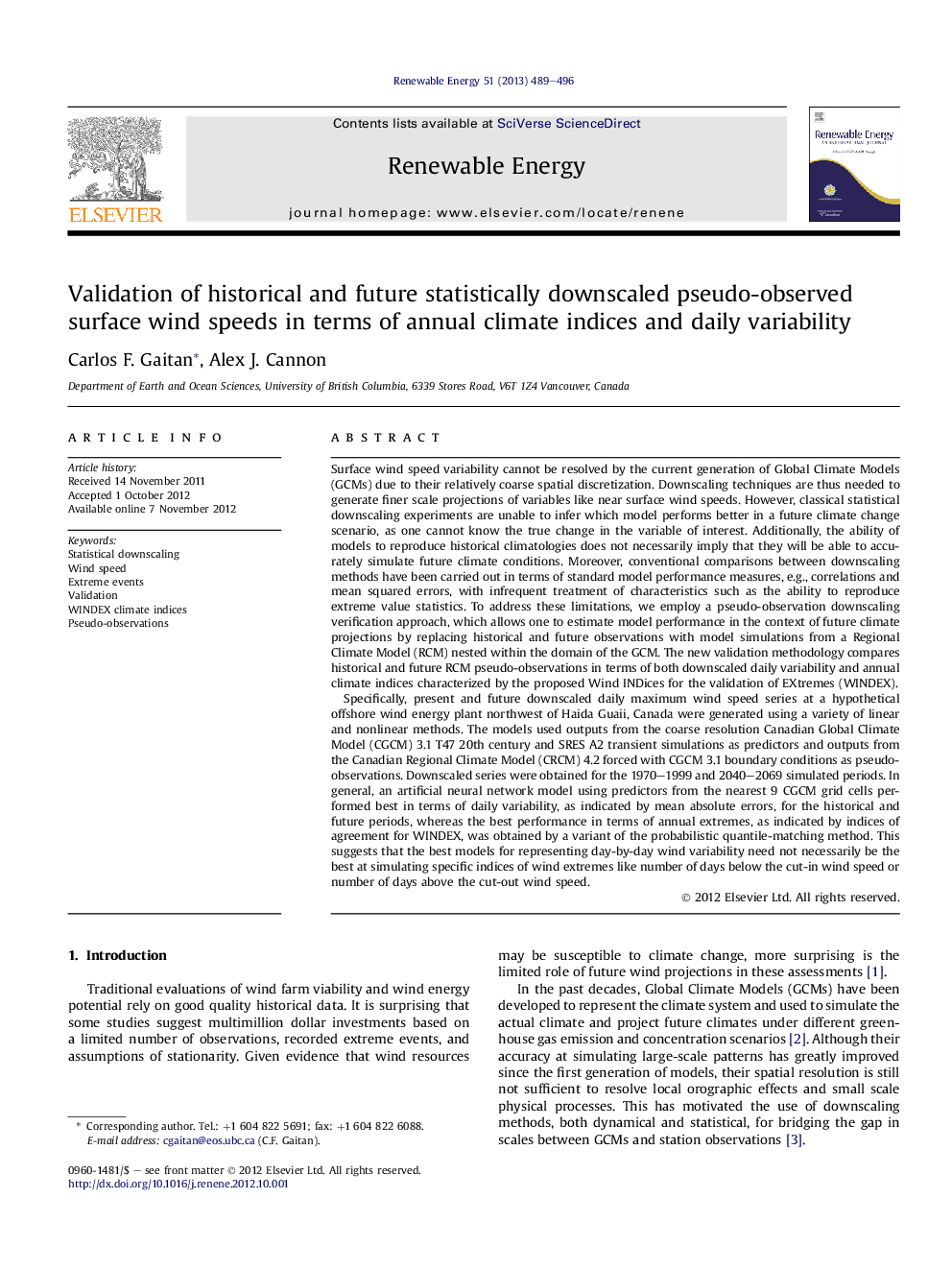| کد مقاله | کد نشریه | سال انتشار | مقاله انگلیسی | نسخه تمام متن |
|---|---|---|---|---|
| 300650 | 512486 | 2013 | 8 صفحه PDF | دانلود رایگان |

Surface wind speed variability cannot be resolved by the current generation of Global Climate Models (GCMs) due to their relatively coarse spatial discretization. Downscaling techniques are thus needed to generate finer scale projections of variables like near surface wind speeds. However, classical statistical downscaling experiments are unable to infer which model performs better in a future climate change scenario, as one cannot know the true change in the variable of interest. Additionally, the ability of models to reproduce historical climatologies does not necessarily imply that they will be able to accurately simulate future climate conditions. Moreover, conventional comparisons between downscaling methods have been carried out in terms of standard model performance measures, e.g., correlations and mean squared errors, with infrequent treatment of characteristics such as the ability to reproduce extreme value statistics. To address these limitations, we employ a pseudo-observation downscaling verification approach, which allows one to estimate model performance in the context of future climate projections by replacing historical and future observations with model simulations from a Regional Climate Model (RCM) nested within the domain of the GCM. The new validation methodology compares historical and future RCM pseudo-observations in terms of both downscaled daily variability and annual climate indices characterized by the proposed Wind INDices for the validation of EXtremes (WINDEX).Specifically, present and future downscaled daily maximum wind speed series at a hypothetical offshore wind energy plant northwest of Haida Guaii, Canada were generated using a variety of linear and nonlinear methods. The models used outputs from the coarse resolution Canadian Global Climate Model (CGCM) 3.1 T47 20th century and SRES A2 transient simulations as predictors and outputs from the Canadian Regional Climate Model (CRCM) 4.2 forced with CGCM 3.1 boundary conditions as pseudo-observations. Downscaled series were obtained for the 1970–1999 and 2040–2069 simulated periods. In general, an artificial neural network model using predictors from the nearest 9 CGCM grid cells performed best in terms of daily variability, as indicated by mean absolute errors, for the historical and future periods, whereas the best performance in terms of annual extremes, as indicated by indices of agreement for WINDEX, was obtained by a variant of the probabilistic quantile-matching method. This suggests that the best models for representing day-by-day wind variability need not necessarily be the best at simulating specific indices of wind extremes like number of days below the cut-in wind speed or number of days above the cut-out wind speed.
Figure optionsDownload as PowerPoint slideHighlights
► We tested the statistical downscaling time invariance assumption.
► Historical and future downscaled surface winds were compared with the CRCM output.
► Downscaled surface winds were validated in terms of daily MAEs and climate indices.
► We described the novel WINDEX indices for validating surface wind extremes.
► We compared probabilistic, linear and nonlinear statistical downscaling methods.
Journal: Renewable Energy - Volume 51, March 2013, Pages 489–496